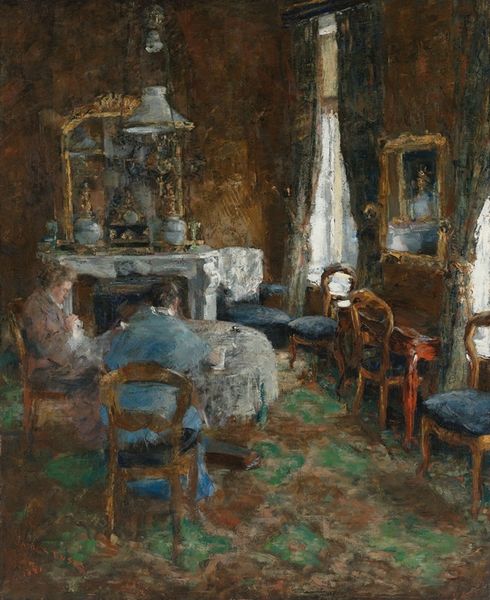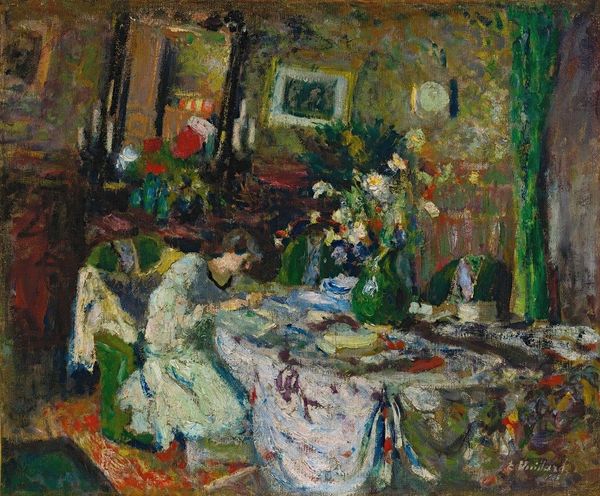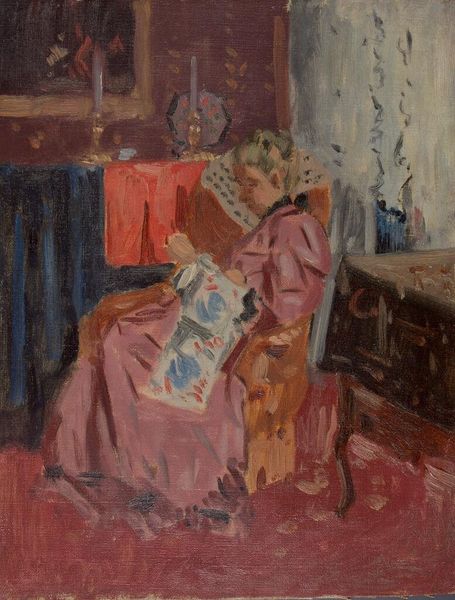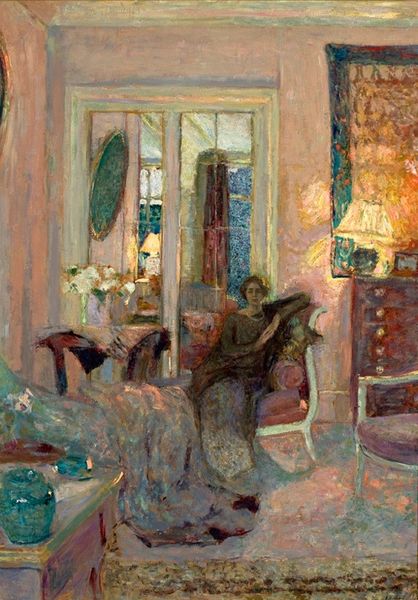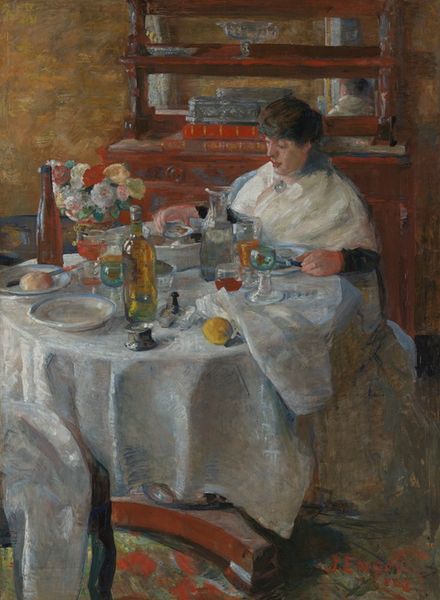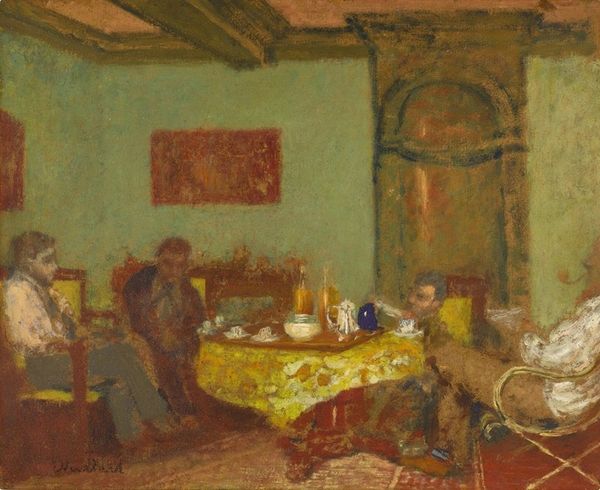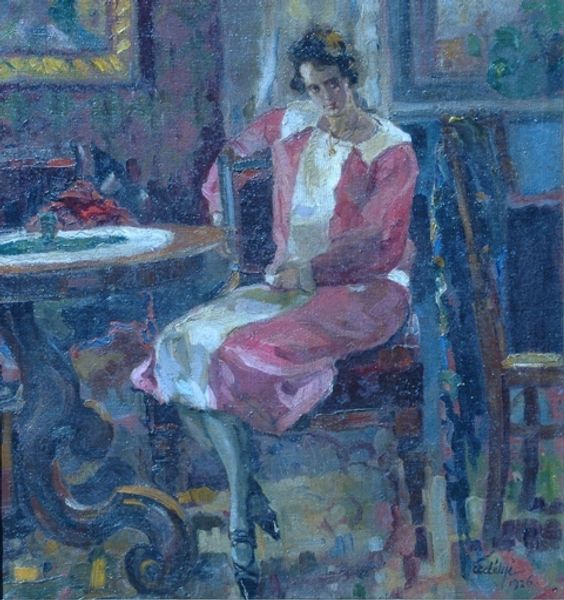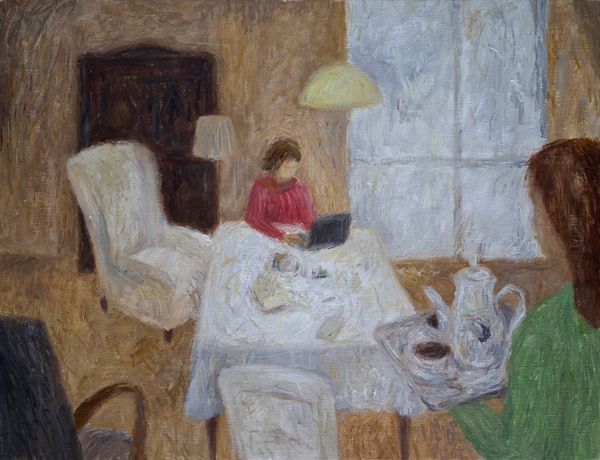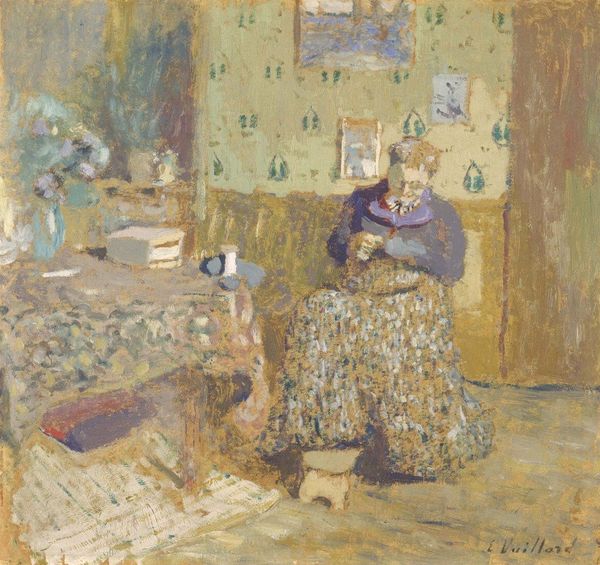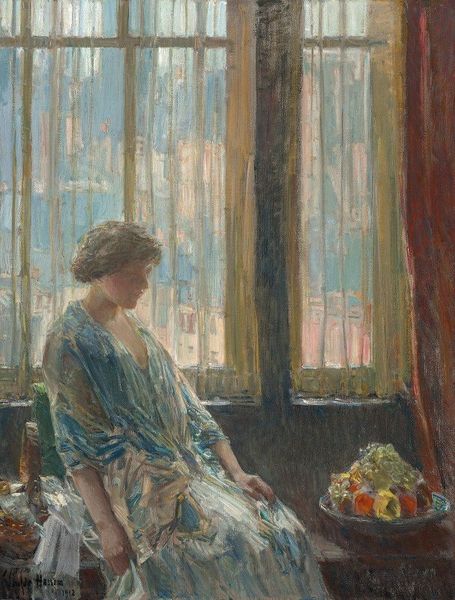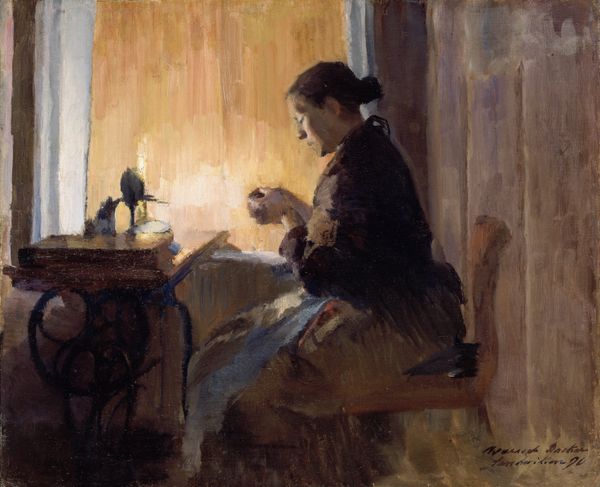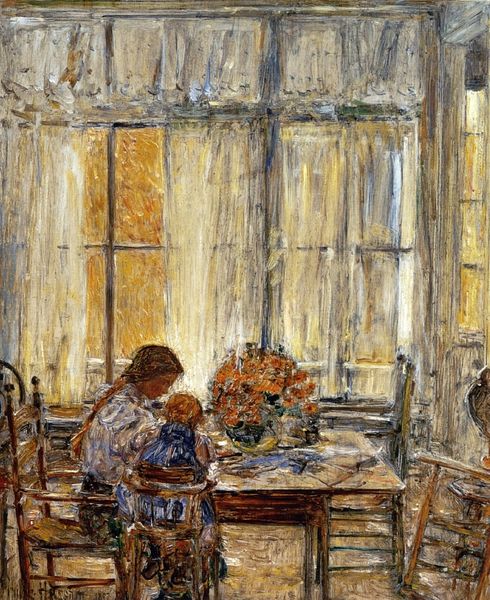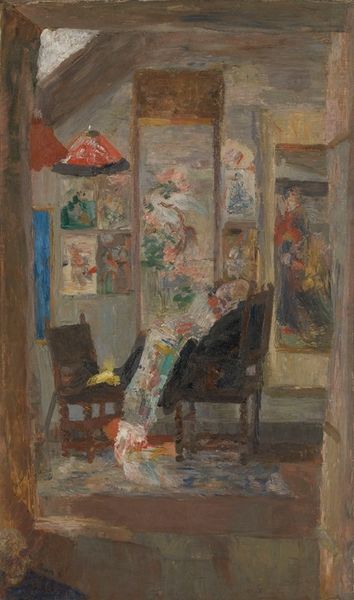
Copyright: Public Domain: Artvee
Curator: Let’s consider Édouard Vuillard's painting, "La Couseuse Devant La Fenêtre," completed around 1910. It's an oil on canvas, rendering a domestic interior. What are your initial thoughts? Editor: The subdued palette immediately strikes me. The browns and reds blend to create a cloistered atmosphere, a hushed interior removed from the outside world. Curator: Precisely. Vuillard was a key figure in the Intimist movement, focusing on private, domestic scenes. These were radical in their own way. Note how he eschews grand narratives for the quiet observation of everyday life, like a woman sewing near a window. It reframes what is considered important enough to be considered art. Editor: The woman, almost lost in the patterned chair and the vibrant carpet, feels symbolic of women’s overlooked labour. How does Vuillard's approach relate to contemporary feminist perspectives on domesticity and artistic representation? Curator: Vuillard doesn't simply depict domesticity; he investigates it, exploring the psychological space of the home and its connection to gendered roles. The window offers a glimpse of the outside world, yet she remains within the frame of domestic expectations. She's both connected and confined, highlighting the paradoxical position women occupy in society. Editor: I also see a reflection on the nature of perception. The painting's surface is textured, almost dissolving into abstraction when viewed closely. How does Vuillard invite us to consider the act of looking itself and question what constitutes representation? Curator: He certainly challenges our notions of realism. His works can be understood as precursors to modern movements focused on deconstructing traditional modes of representation, using visible brushstrokes to question artistic practices. The lack of distinct details invites contemplation on what's unseen, unspoken, and marginalized. It compels viewers to acknowledge their subjective roles in constructing meaning. Editor: Thinking about Intimism within a broader social history, the retreat into domestic space often mirrors a disenchantment with broader social and political movements. How does Vuillard’s work engage, or disengage, with the major social upheavals of his time? Curator: Well, art history usually looks to contextualize art from that period as turning inwards in response to the rise of industrialization and the changing roles within societal structures, allowing us a nuanced insight into the turn of the century and social upheaval as women's roles evolved. Editor: I'll carry this renewed appreciation for Vuillard's delicate handling of color and texture forward into a greater understanding of artistic movement within sociopolitical context, framing art's reflection upon an introspective theme for further learning.
Comments
No comments
Be the first to comment and join the conversation on the ultimate creative platform.
